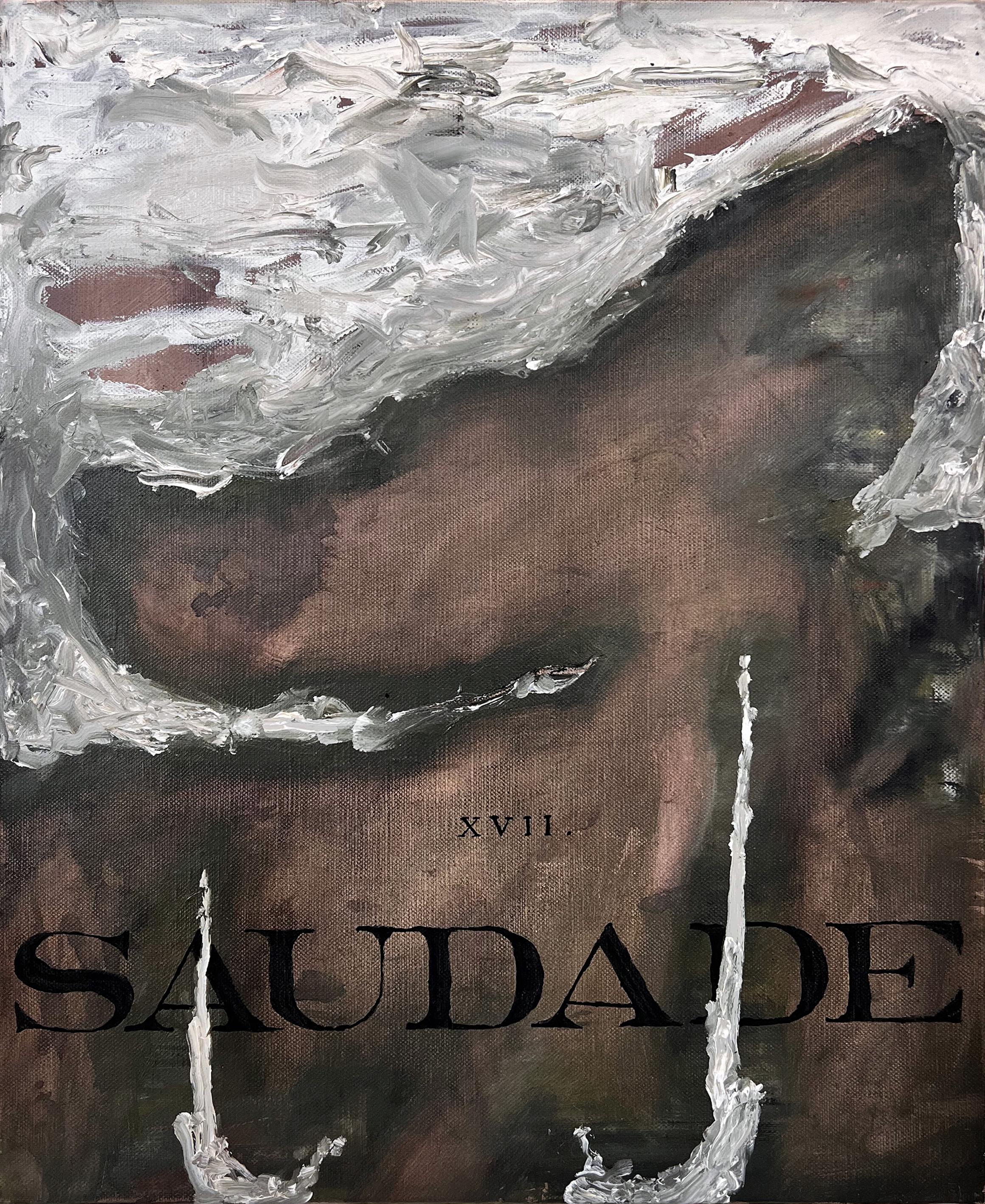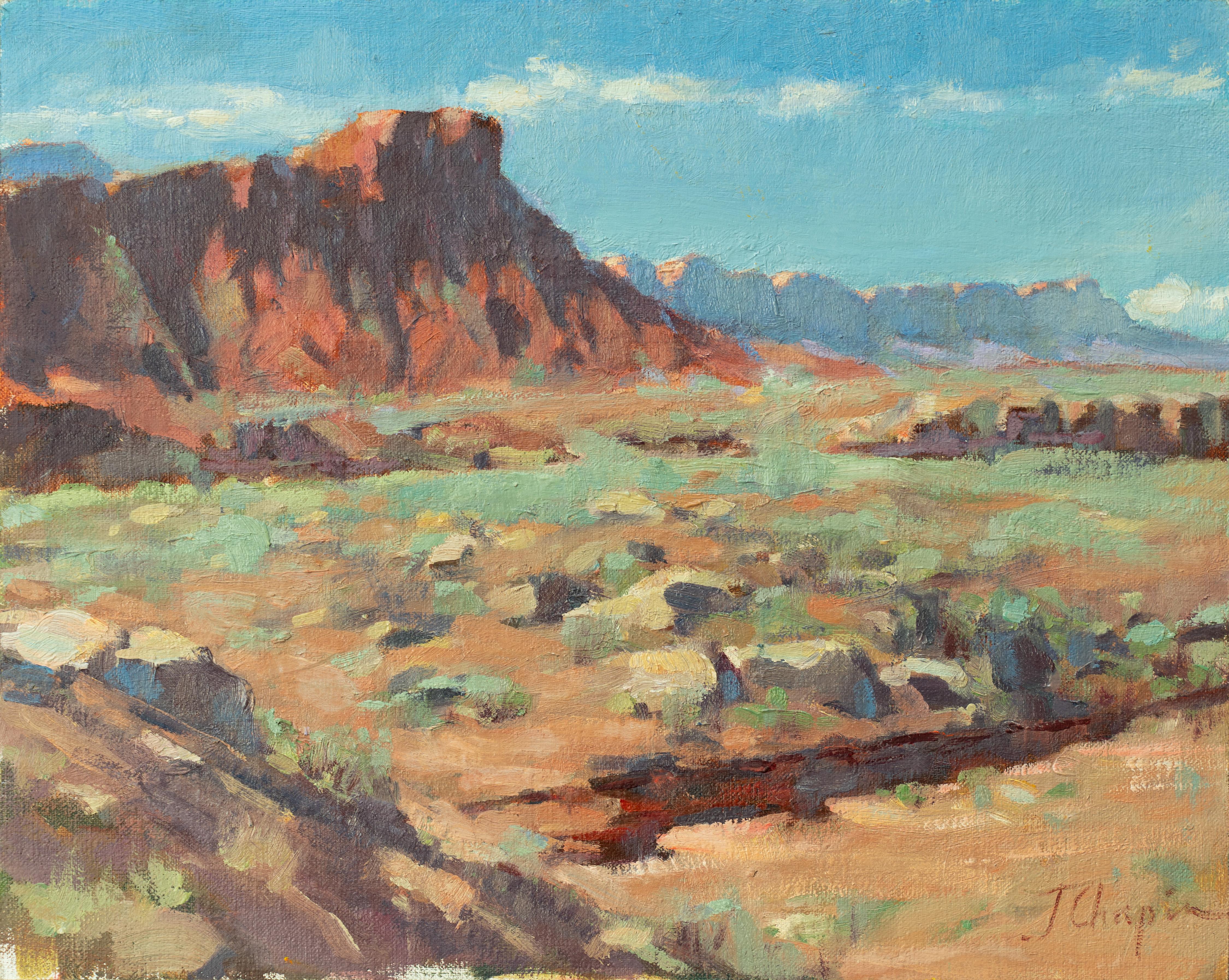Items Similar to Untitled
Want more images or videos?
Request additional images or videos from the seller
1 of 5
Jacqueline HumphriesUntitled1992
1992
About the Item
By the mid-1980s painting had been declared “dead” several times over. But for the contemporary painter Jacqueline Humphries, the medium became a “rogue practice”; however risky, it has remained her foundation. “Painting can adapt to anything,” she notes. Throughout her career Humphries has thus adapted to—and subverted—painting’s formal and discursive conditions, often with reference to both art history and cutting-edge technological formats. Early canvases, such as those in her 1995 Greene Naftali show (the gallery’s first solo presentation), probe the legacy of Abstract Expressionism, envisioning that movement’s chaotic drips not as destructive but constructive—as a sort of code which Humphries manipulates to form the basis of her own works. Balancing conceptual maneuvers and striking opticality in the ample space of her canvases, Humphries, like her peers Laura Owens and Charline von Heyl, betrays “a profound knowledge of how to make, and fake, marks on canvas,” writes Mark Godfrey—“how to navigate the histories and associations of those marks and control what impact they might have on viewers.”
- Creator:Jacqueline Humphries (1960)
- Creation Year:1992
- Dimensions:Height: 14 in (35.56 cm)Width: 14 in (35.56 cm)
- Medium:
- Period:
- Condition:
- Gallery Location:New York, NY
- Reference Number:1stDibs: LU8512551402
About the Seller
5.0
Recognized Seller
These prestigious sellers are industry leaders and represent the highest echelon for item quality and design.
Established in 1981
1stDibs seller since 2011
33 sales on 1stDibs
Typical response time: 1 to 2 days
Associations
Art Dealers Association of America
- ShippingRetrieving quote...Ships From: New York, NY
- Return PolicyThis item cannot be returned.
More From This SellerView All
- AIR, THE POETRY OF SPACEBy Julie HedrickLocated in New York, NYabstract painting in soft colors with gold edgeCategory
21st Century and Contemporary Abstract Abstract Paintings
MaterialsLinen, Oil
- ARIADNE'S GOLDEN THREADBy Julie HedrickLocated in New York, NYabstract painting in soft colors with a gold edgeCategory
21st Century and Contemporary Abstract Abstract Paintings
MaterialsLinen, Oil
- GRAND PALEIABy Hugo BastidasLocated in New York, NYOil painting on linen of chandelier in overgrown forest. nature trees landscape surrealCategory
21st Century and Contemporary Contemporary Landscape Paintings
MaterialsLinen, Oil
- IT'S IN THE WATERBy Hugo BastidasLocated in New York, NYblack and white landscape painting of lily pads. floralCategory
2010s Contemporary Landscape Paintings
MaterialsLinen, Oil
- YOU CAN GET THERE FROM HEREBy Hugo BastidasLocated in New York, NYlandscape paintingCategory
21st Century and Contemporary Landscape Paintings
MaterialsOil, Linen
- Eastern Landscape, KilimLocated in New York, NYValerie Hird’s body of work is a visual compilation of the experiences, associations and memories collected in her trips through the Middle East, Northern Africa, Spain and Turkey. H...Category
1990s Paintings
MaterialsLinen, Oil
You May Also Like
- "Saudade" (black & white, rich, text, type, abstract, surreal, natural, neutral)By Nicholas EvansLocated in Paris, IDFSAUDADE 2024, Paris, France An abstract, original painting on linen, which is primarily black & white with hand-painted typography detail. Centered at the bottom of the work reads t...Category
21st Century and Contemporary Abstract Abstract Paintings
MaterialsOil, Linen
- Portrait of Jean-Baptiste Greuze, painted on linen by his daughter Anna GreuzeLocated in PARIS, FRThis replica of the last self-portrait of Jean-Baptiste Greuze painted in 1804, executed by his daughter Anna at her father's side and recently rediscovered, provides us with a poignant image of the great artist, represented with panache despite the disillusions of life. 1. Jean-Baptiste Greuze Jean-Baptiste Greuze was the sixth child of a roofer from Tournus and retained a certain rusticity in his behaviour from his provincial childhood, beyond his taste for describing picturesque scenes of the countryside. He initially started training with a little-known painter from Lyon, Charles Grandon, before his genius was recognised in Paris where he became a full-time student of the Académie (of Painting) in 1755. He exhibited his work for the first time at the Salon during the summer of 1755, before leaving on a trip to Italy in the company of Louis Gougenot, abbot of Chezal-Benoît. Upon his return to Paris, Greuze became a prolific painter, participating widely in the Salons held between 1759 and 1765, to which he sent no less than 63 paintings: numerous genre scenes (The Marriage Contract, The Beloved Mother), but also portraits of his family circle, of courtiers and art lovers, or of his colleagues. The Academy closed the doors of the Salons to him in 1767 for not having produced his reception piece within six months of his reception, as was the tradition. He worked actively on this painting (Emperor Severus rebukes Caracalla, his son, for trying to assassinate him ) until the summer of 1769, tackling historical and mythological subjects for the first time. Once this was completed, he was then fully admitted to the Academy, but as a genre painter, and not as an historical painter, which had been one of the greatest humiliations of his life. Greuze then refused any participation in events organised by the Academy or its successor, the Academy of Fine Arts until 1800. Abandoning history painting, he gave a new twist to genre scenes, bringing them closer to history painting, as in this pair of canvases which constitutes some of his masterpieces: The Paternal Curse: The Ungrateful Son and The Paternal Curse: The Punished Son . Married in 1759 to Anne-Gabrielle Babuti, the daughter of a Parisian bookseller, his marriage was unhappy and his wife probably frequently unfaithful. The institution of divorce enabled him to record their separation in 1793, keeping his two daughters Anna-Geneviève, born in April 1762, and Louise-Gabrielle, born in May 1764, with him. Little is known about his daughter Anna except that she was herself a painter and lived with her father until his death. It is likely that most of the paintings she produced up to that date were attributed to her father, whose technique she shared to a great extent, making it extremely difficult to establish an autonomous corpus of her paintings. Greuze died in his studio at the Louvre on March 21st 1805. The attention paid to the expressivity of his characters and the emotional charge they convey enabled Jean-Baptiste Greuze to enjoy immense popularity with the eighteenth-century public, and they still constitute Greuze's true modernity. As the artist said, "I dipped my brush in my heart". Greuze was also an exceptional draughtsman and a portraitist of immense talent and exceptional longevity who painted both the Dauphin (the son of Louis XV and father to Louis XVI) and the young Napoleon Bonaparte. 2. Greuze's self-portraits Greuze was very much influenced by Dutch paintings during all his life. While the source of his inspiration for genre scenes can be found in Gerard Dou...Category
Early 1800s Old Masters Portrait Paintings
MaterialsLinen, Oil
- UntitledLocated in Washington, DCA Sculptor's Full Circle, Yoichi Tamaki at Alex - Washington Post (April 1, 1999). Judging from his lively exhibition at Alex Gallery, Yoichi Tamaki wo...Category
1990s Abstract Abstract Paintings
MaterialsSandstone
- Vermillion at Lee's Ferry ( Plein Air Landscape painting sky blue terracotta)By Jane ChapinLocated in Cody, WYThis is a 'Plein Air" landscape Painting by Jane Chapin as seen in the viewing room exhibition on Silas VON MORISSE GALLERY. “Plein-Air” is the French expression to describe the act of painting in situ within the landscape, capturing the ever changing weather and light with tonal qualities, colour, loose brushwork and softness of form... The practice of “Plein Air Painting” goes back for centuries but was truly made into an art form by the French Impressionists such as Claude Monet, Camille Pissarro, Alfred Sisley, and Pierre-Auguste Renoir who were advocating of plein air painting. Much of their work was done outdoors in the diffuse light of a large white umbrella. Another major proponent of Plein Air was Jean Baptiste Camille Corot whom Claude Monet considered as “The only One Master here”. Corot provides a transition from the sharp academic style that ruled in his day with focus on the natural world and the lyrical expressiveness of one's work. With her "Plein Air Paintings", Jane Chapin is part of one of the largest art movements in history. Her paintings carry human emotions. We can read her moods and feelings with places that carry deep remembrances for the artist that go beyond the descriptive. "My paintings grow from observing and interpretating light as it emerges from, surrounds and reflects on everyday people and scenes. They seek to remind us of the beauty of our common surroundings, regardless of where we are." - Jane Chapin Jane Chapin Painting the Land of the Free...Category
2010s American Impressionist Landscape Paintings
MaterialsLinen, Oil, Board
- Pecos Temple (Plein Air landscape Painting - beige neutral colors)By Jane ChapinLocated in Cody, WYThis is a 'Plein Air" landscape Painting by Jane Chapin as seen in the viewing room exhibition on Silas VON MORISSE GALLERY. “Plein-Air” is the French expression to describe the act...Category
2010s American Impressionist Landscape Paintings
MaterialsLinen, Oil, Board
- Domestic ArchitectureLocated in Miami, FLThe title of the series is Arquitecturas Domésticas and has this interesting link with the a Spanish Baroque. What Gloria is doing with these pieces is reinterpreting the Spanish Bar...Category
2010s Contemporary Still-life Paintings
MaterialsLinen, Oil, Pigment





